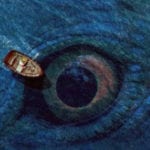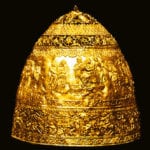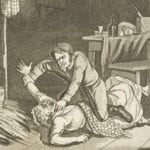 Mysteries
Mysteries  Mysteries
Mysteries  History
History 10 Surprising Stories About the Texas Rangers
 Humans
Humans 10 Philosophers Who Were Driven Mad by Their Own Theories
 Miscellaneous
Miscellaneous 10 Video-Game-Worthy Weapons and Armors from History
 Weird Stuff
Weird Stuff 10 Psychics Who Accurately Predicted Wartime Events
 The Arts
The Arts 10 Pieces of Art Inspired by a Broken Heart
 Health
Health 10 Science Fiction-Sounding New Medical Treatments
 History
History 10 Surprising Facts About the Father of Submarine Warfare
 Space
Space Ten Astonishing New Insights into Alien Worlds
 Weird Stuff
Weird Stuff 10 Bizarre Summer Solstice Rituals Still Practiced Today
 Mysteries
Mysteries Top 10 Haunting Facts About the Ghost Ship MV Alta
 History
History 10 Surprising Stories About the Texas Rangers
 Humans
Humans 10 Philosophers Who Were Driven Mad by Their Own Theories
Who's Behind Listverse?

Jamie Frater
Head Editor
Jamie founded Listverse due to an insatiable desire to share fascinating, obscure, and bizarre facts. He has been a guest speaker on numerous national radio and television stations and is a five time published author.
More About Us Miscellaneous
Miscellaneous 10 Video-Game-Worthy Weapons and Armors from History
 Weird Stuff
Weird Stuff 10 Psychics Who Accurately Predicted Wartime Events
 The Arts
The Arts 10 Pieces of Art Inspired by a Broken Heart
 Health
Health 10 Science Fiction-Sounding New Medical Treatments
 History
History 10 Surprising Facts About the Father of Submarine Warfare
 Space
Space Ten Astonishing New Insights into Alien Worlds
 Weird Stuff
Weird Stuff 10 Bizarre Summer Solstice Rituals Still Practiced Today
10 Great Hoaxes of the 18th Century
When we think of pranks we often think of modern-day internet sensations or poorly-shot grainy videos of UFOs. Seldom do we think of hoaxes over two hundred years old. But pulling the wool over people’s eyes was just as popular back then as it is today. And without the immediacy of the internet, hoaxes of the 18th century had to be a lot more inventive than your run-of-the-mill Bigfoot picture.
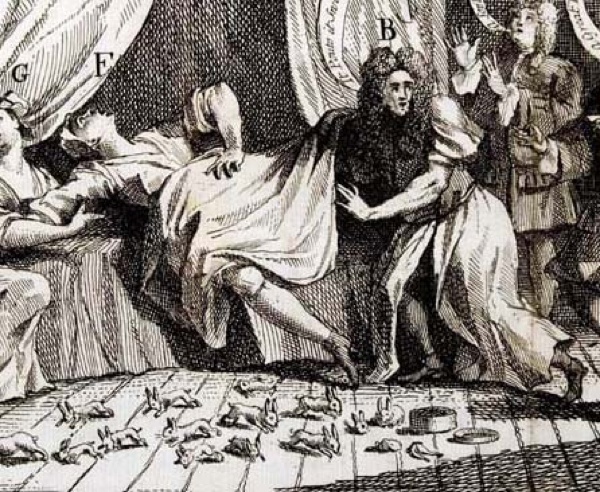
If you’re going to choose an animal to give birth to, you might as well choose something small and inconspicuous, right? Put it this way, you’re not going to choose a shark. Mary Toft of Godalming, England, opted for the humble rabbit—but not just one of the furry little thumpers. When surgeon John Howard was summoned to the Toft household in 1726, he witnessed the birth of nine rabbits, all dead and not all whole.
An investigation by the surgeon-anatomist to the King himself—Nathanael St. Andre—followed. Nationwide press coverage, a trip to London and numerous tests later the men of science were still confounded. It was only when a butcher of Godalming admitted to supplying the Toft household with rabbits and one of the surgeons announced plans for a thorough, and internal, examination of her uterus that Mary came clean.
Mary had slyly inserted the dead rabbits into her womb when no one was looking. But why the deception? Mary was desperate for fame and fortune and an audience with the King. But what she really got was a small fine for fraud and the guilt of ruining the two surgeons’ careers – both St Andre and Howard never worked in England again.
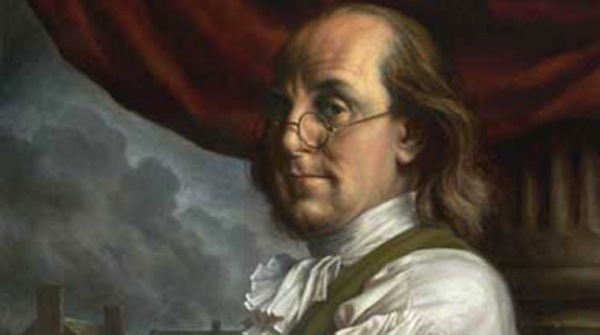
Benjamin Franklin (1706–1790) is a renowned 18th century philosopher, man of science, and statesman . . . but he was also a prolific hoaxer. From witch trials, and prophesies, to tales of flying kites in thunderstorms, Franklin always had a hoax on the go and in the midst of the American Revolutionary War, Franklin pulled one of his best pranks.
In 1782, a mysterious newspaper called The Supplement to the Boston Independent Chronicle printed a letter revealing that Indian warriors were being paid by the British to send thousands of American scalps, including those of women and children, to the British royal family and members of parliament as trophies of war. Within days the contents of the letter had reached European shores, where people were obviously horrified.
However, it was all an elaborate trick set up by Franklin. He’d printed the paper himself and handed it out to friends, one of whom had leaked it to a contemporary on the other side of the pond. In truth, the article did its job. Franklin had always intended to turn European opinion against the British in the hope of helping the war effort and he did just that.

Eighteenth century British noblemen. When they weren’t scoffing the spoils of their land and generally pointing and laughing at peasants, they were coming up with ways to test the gullibility of the general public. In 1749, the Duke of Portland bet the Earl of Chesterfield that if he advertised a show featuring a man jumping into a wine bottle people would come in their droves to see this ergonomic anomaly—and they would pay for the privilege.
The pair placed an advert in the London newspapers, stating the show—which would also feature a séance and a musical cane—would cost 10d (£5; $7.90 today). Within days every single seat in the house was sold. On the night of the event the theatre was packed, but when the show didn’t start on time the crowd turned nasty, tearing up seats and creating a bonfire out on the street upon which everything from tickets to powdered wigs was thrown.
The media poked fun at the now-obvious hoax but falsely pointed the finger at popular prankster of the day Samuel Foote. The Duke and the Earl kept their lips tight for several years until eventually their bet was revealed and Foote was finally let off the hook.

Fee-fi-fo-fum, I smell the hoax of an Englishman! When the good ship Dolphin docked in London in 1766, returning from a journey around the world, word got round the city that whilst in South America the crew had encountered a tribe of giants. Within months, the rumor was given validation by its publication in the London Chronicle. In fairness, the hoax had a precedent: In the 16th century Antonio Pigafetta said he’d encountered a race of South American giants and in 1578, the chaplain of Sir Francis Drake’s ship recorded details of a group of “very tall” Patagonians.
Ultimately, the rumor of the giants seen by the Dolphin was debunked when the real account of the its travels was published in 1773. The pages revealed a tall tribe, but one with the tallest member reaching six foot six inches not the twelve feet which had been reported some seven years earlier.

Yes—they may sound like the villain in an awful episode of Doctor Who, but the idea of sperm as tiny little men was actually entertained by many scientists in the mid-18th century. The story starts with an immaculate conception. The British Royal Society received a letter entitled Pregnancy Without Intercourse from one Abraham Johnson. The letter described the phenomenon of a woman becoming pregnant by minuscule particles invisible to the human eye.
Called “floating animalcula,” these particles were allegedly isolated and examined under a microscope. They were revealed to be miniature men. Johnson concluded the letter by requesting the king announce a year long nationwide ban on sex so that he could examine the amount of conceptions made by “floating animalcula.” In fact, the letter was from Sir John Hill, who had wanted to satirize the common “spermist” theory of the day – namely that sperm was actually made up of tiny men called homunculi who, once placed inside a woman’s womb, grew into a child.
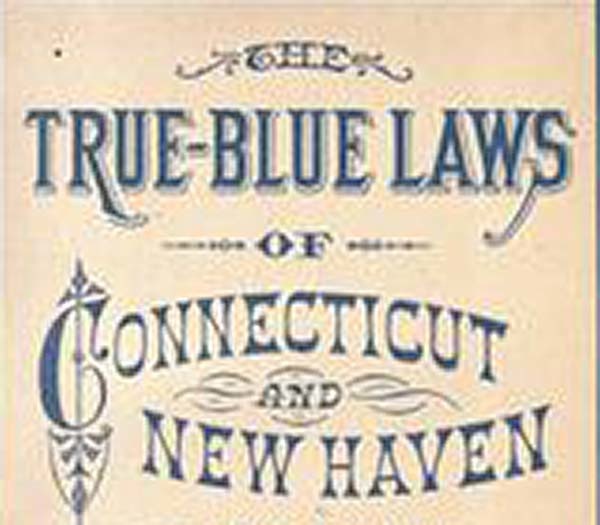
Beware the man who holds a grudge. The Reverend Samuel Peters was a great example of this. A rich Anglican, Peters was chased out of America during the revolution and upon his arrival in London decided to smear his previous home as an oppressive and backwards state. In 1781, Peters printed a book titled A General History of Connecticut within which several blue Laws were stated. Laws such as: it is illegal to kiss a child or shave your face on a Sunday and every man must have his hair “cut round.”
The book went on to say that should you commit any of these crimes, you could be punished by having your ears cut off, your tongue burned or even be put to death. It caused a massive stir in England but in New England, citizens were outraged because, of course, none of these blue laws existed.
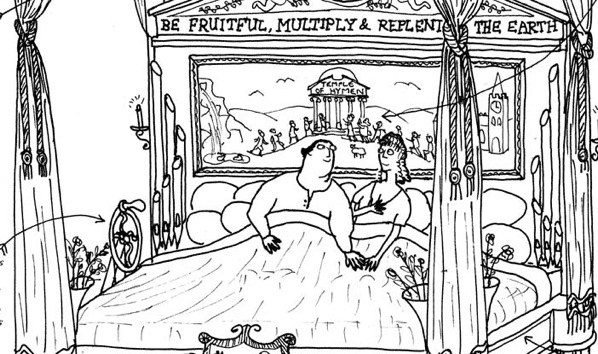 Doctor James Graham was a pioneer of electrical medicine. The English gentry of the day would flock to him for their weekly shock of electricity to cure all manner of ills. But the thing was, Graham wasn’t even a doctor. He’d left medical school in Edinburgh long before his final exams and after a brief journey across America, returned to the UK to set up his Temple of Health in 1779.
Doctor James Graham was a pioneer of electrical medicine. The English gentry of the day would flock to him for their weekly shock of electricity to cure all manner of ills. But the thing was, Graham wasn’t even a doctor. He’d left medical school in Edinburgh long before his final exams and after a brief journey across America, returned to the UK to set up his Temple of Health in 1779.
His masterpiece of this electrical emporium was the Celestial Bed. Rentable for fifty pounds a night the bed was said to cure sterility and impotence. With a mattress stuffed with the hair from the tails of nine English stallions, a mirror fastened to the ceiling, and a headboard that cracked and fizzed with electricity it had to be too good to be true—and so it proved to be.
Despite a consistent clientele for Graham’s Temple of Health, the fake doctor was falling into debt fast and he moved back to Edinburgh, taking up the name O.W.L, short for “Oh, Wonderful Love.” He spent his last days spouting about the benefits of mud baths and stripping in the middle of the street to give his clothes to the poor. Celestial Bed or no Celestial Bed, Graham was as mad as a box of electrical frogs.

Dr. Johann Bartholomew Adam Beringer was one of the major minds of the 18th century. Senior Professor and Dean of the Faculty of Medicine at the University of Würzburg in Germany he also had an interest in oryctics—known today as palaeontology, or the study of fossils. Beringer was a keen collector and he had many in his possession, although none of historical significance.
That is until one day in 1725 when two of his colleagues brought to him several unusual rocks they said they’d found near Mount Eivelstadt. The objects were simple stones yet they were all impressively embossed with images of plants, insects, and so on. Over the months Beringer’s co-workers brought him more stones and by the end of the year he owned over 2000 decorated rocks.
Believing he had struck gold Beringer began work on a book, Lithographiae Wirceburgensis, claiming the stones were the relics of the great flood or the work of something beyond man’s comprehension. Right on cue, the hoaxers brought the doctor one more rock; one with his name carved on it. Fearing for his academic future, Beringer attempted to buy all copies of his book, but to no avail. Instead, he took the two men to court whereupon it was revealed that his fellow professors pulled the prank to teach the arrogant Beringer a lesson.
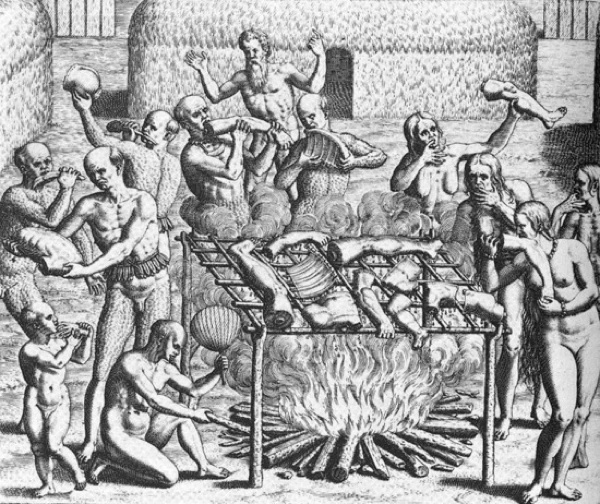
Today Jonathan Swift is respected as one of the greatest satirists of all time, his work Gulliver’s Travels having been recreated for pretty much every generation. But flash back to 1725 and the Irish wit was not so well-known. During this time Swift published an essay called A Modest Proposal for Preventing the Children of Poor People in Ireland From Being a Burden to their Parents or the Country, and For Making Them Beneficial to the Public.
The title wasn’t the only thing that was a mouthful. On the face of it, the essay seemed to be an exploration of the starvation of the poor in Ireland but the conclusion offered one radical solution: feed unwanted babies of the poor to the rich. He even included cooking suggestions, stating a year old child would make a wondrous ragout. Of course, we now know Swift was making a polemical point of the class system of the British Isles but back then people were hiding their children from the bubbling stew pot of the rich.

Father and son relationships can be tricky at the best of times. But if your father is obsessed with a dead playwright and won’t give you the time of day what is a son to do? Make up a forgery and give it to your dad to tell the world about, clearly. And this is exactly what William Henry Ireland did. His father Samuel Ireland, a bookseller by trade was also one of many people of the 18th century who were collectors of anything to do with Shakespeare.
So when his son arrived home one day with a copy of a letter Shakespeare had written to the Earl of Southampton, which his son had found amongst some old documents in the law office in which he worked, why would he question his own flesh and blood? Craving yet more attention from his father, Henry brought home more Shakespearean forgeries including a love letter to Anne Hathaway and a historical play titled Vortigern.
Eventually, Father Samuel arranged for the play to be put on at Drury Lane Theatre on April 2, 1796. The actors, however, were not convinced and the play was only performed for one night, amongst much jest, before being cancelled. Shortly afterwards Henry admitted to the forgeries. But the father refused to believe his son, and even on his death bed insisted the documents were truly the work of the great bard himself.


